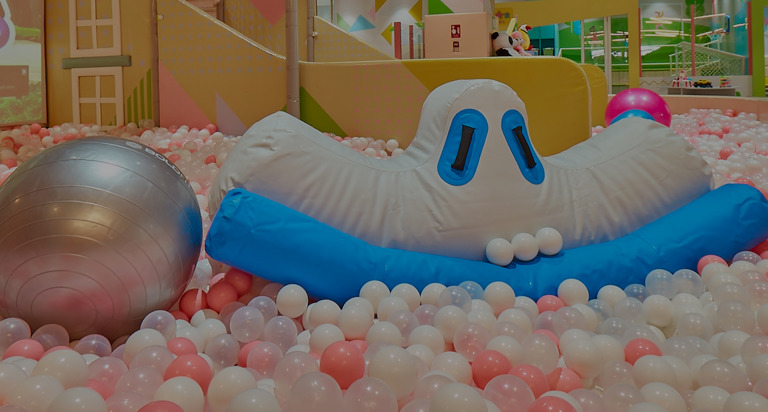
These STEAM activities are simple to set up, big on learning, and perfect for curious kids. Try them after school or on weekends — no screens needed!
What it involves: A lemon, baking soda, food coloring, dish soap
How to: Cut the lemon, scoop in baking soda and a few drops of food coloring. Watch it fizz!
Kids learn: Chemical reactions, acids & bases
Best for: Ages 5–10
What it involves: Plastic bottle, glow stick, ribbon, tape
How to: Place the glow stick inside the bottle, attach ribbons as tentacles. Turn off the lights!
Kids learn: Bioluminescence, marine biology
Best for: Ages 6–12
What it involves: Baking soda, food coloring, water, vinegar
How to: Mix baking soda with colored water, paint on paper, and spray with vinegar.
Kids learn: Reaction science, color theory
Best for: Ages 4–8
What it involves: Cardboard, paint, string, scissors
How to: Cut and paint planets, hang from a hanger or hoop in solar order.
Kids learn: Space science, sequencing
Best for: Ages 6–10
What it involves: Ice cube tray, food coloring, craft sticks, paper
How to: Freeze colored water with sticks, then paint on paper as it melts.
Kids learn: Color blending, melting/freezing
Best for: Ages 3–7
What it involves: Pipe cleaners, clay, craft sticks
How to: Build a sculpture that stays balanced — try different weights and angles.
Kids learn: Physics, engineering
Best for: Ages 6–12
What it involves: Lemon juice, cotton swab, lamp
How to: Write a secret message with lemon juice, then reveal it using heat from a lamp.
Kids learn: Chemical change, creativity
Best for: Ages 7–12
What it involves: Baking soda, vinegar, black paper, glitter
How to: Make moon craters with a fizzing mix on black paper. Add sparkle!
Kids learn: Moon textures, reactions
Best for: Ages 5–9
What it involves: Markers, paper towel strips, water
How to: Draw on strips, dip in water, and watch the colors separate.
Kids learn: Color separation, absorption
Best for: Ages 5–10
What it involves: Cardboard, markers, string
How to: Color a wheel with rainbow slices, spin fast, and watch it turn white.
Kids learn: Light blending, motion
Best for: Ages 6–10
What it involves: Toothbrush head, vibrating motor, battery
How to: Attach the motor to the brush, connect the battery, and let it buzz around.
Kids learn: Simple robotics, circuits
Best for: Ages 8–12
What it involves: LEGO bricks, flashlight, paper
How to: Build structures, shine a light, and trace the shadow on paper.
Kids learn: Light and angles, creativity
Best for: Ages 5–9
What it involves: Paper, paint, paper clips, magnets
How to: Drag paper clips through paint using a magnet under the paper.
Kids learn: Magnetism, cause and effect
Best for: Ages 6–10
What it involves: Watercolors, glue, salt, paper
How to: Draw with glue, sprinkle salt, then touch watercolors to watch it spread.
Kids learn: Absorption, texture art
Best for: Ages 4–8
What it involves: Perler beads, pegboard, iron
How to: Create colorful math patterns using bead arrays, then fuse them.
Kids learn: Multiplication, patterns
Best for: Ages 6–12
What it involves: Crayons, black paint, dish soap
How to: Color paper with crayons, paint over it with black paint, scratch to reveal colors.
Kids learn: Layers, art + chemistry
Best for: Ages 5–10
What it involves: Baking soda, citric acid, molds, essential oils
How to: Mix ingredients, mold into shapes, and drop into water for fizz fun!
Kids learn: Chemical reactions, mixtures
Best for: Ages 6–12
What it involves: Paper, markers
How to: Write 3 numbers in a triangle to practice addition and subtraction families.
Kids learn: Math fluency, number bonds
Best for: Ages 5–9
What it involves: Zip bag, baking soda, vinegar, tissue
How to: Wrap baking soda in tissue, place in a bag with vinegar, seal, and watch it pop!
Kids learn: Gas production, pressure
Best for: Ages 6–10
What it involves: Watercolors, black paper, salt
How to: Paint galaxy patterns, sprinkle salt for a starry texture.
Kids learn: Astronomy, watercolor blending
Best for: Ages 4–10
What it involves: String, small toy, paper clips, straw
How to: Build a zip line and test which toys slide fastest.
Kids learn: Physics, friction
Best for: Ages 6–10
What it involves: Milk, sugar, vanilla, ice, salt, two plastic bags
How to: Mix ingredients in a small bag, place in a larger bag with ice + salt, and shake until frozen!
Kids learn: States of matter, freezing points
Best for: Ages 6–12
What it involves: Yardstick, rubber bands, spoon
How to: Use rubber bands to launch small objects with a spoon catapult.
Kids learn: Potential energy, trajectory
Best for: Ages 7–12
What it involves: Cup, string, sand, paper
How to: Hang a cup with sand, swing over paper, and watch the patterns form.
Kids learn: Gravity, motion
Best for: Ages 6–12
What it involves: Construction paper, glue, scissors, markers
How to: Cut and layer paper to build an underwater scene in 3D.
Kids learn: Marine life, spatial design
Best for: Ages 4–9